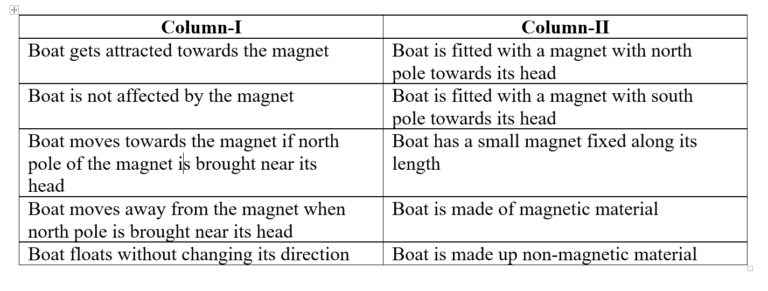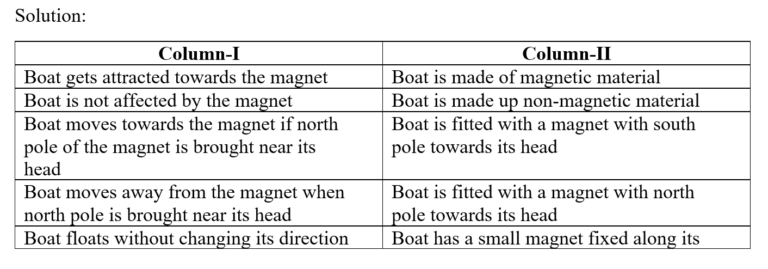Fun with Magnets-class 6-science-NCERT solutions
NCERT Solutions alongwith notes for class 6 science “Fun with Magnets” are provided here. The notes as well as solutions are very much helpful for the students to understand the topics. The solutions will be handy for quickly completing the homework and preparation for exams.
Table of Contents
ToggleHow Magnets Were Discovered
- There was a shepherd named ‘Magnes’. He had a stick. A small piece of iron was attached at one end of that stick. One day his stick was stuck to a rock. The rock was a natural magnet. In this way, natural magnets were discovered.
- Such rocks were given the name magnetite, perhaps after the name of that shepherd. This rock was also called lodestone.
- Some people believe that magnetite was first discovered at a place called Magnesia, a district in Asia Minor.
Magnetic and Non-magnetic materials
Magnetic Materials–The materials which get attracted towards a magnet are called magnetic materials or ferromagnetic materials. For example – iron, nickel or cobalt.
Non-magnetic materials: The materials which are not attracted towards a magnet are non-magnetic materials. For example – Copper, Lead, Wood etc.
What is magnet?
Objects which attract magnetic materials like cobalt, nickel and iron are called a magnet. A magnet is made up of an iron ore called magnetite.
Classification of Magnets:
Magnets are classified based on two important factors are:
- On the basis of how magnets are formed
- On the basis of retentivity of magnets
On the basis of how magnets are formed:-
On this basis, magnets are divided into two groups. One is a natural magnet and the other one is an artificial magnet.
- Natural magnet:- magnets that exist in the nature naturally are called natural magnet. For example – Magnetite
- Artificial Magnet: Magnets that are made through artificial processes are called artificial magnets. For example – electromagnet, horseshoe magnet etc.
On the basis of retentivity:
On this basis, magnets are divided classified into two groups. One is a permanent magnet and the other is a temporary magnet.
- Permanent Magnet – Magnets which retain magnetism for a long time are called permanent magnets. Permanent magnets are made of steel, nickel, and cobalt.
- Temporary Magnet – Magnets which retain magnetism for a short time are called temporary magnets. These magnets are usually made of soft (pure) iron. For example – paper clips, iron nails etc.

Different shapes of magnet
Magnets come in different shapes and sizes, each serving different purposes.
- Bar Magnet
- Horseshoe magnet
- Ring magnet
- Needle magnet
- Disc magnet
- Cylindrical magnet

Poles of a magnet
- The end points of a magnet where most of its magnetic power is concentrated are called magnetic poles.
- Every magnet, no matter of what is its shape, has two poles i.e. north pole and south pole.
- The end of the magnet pointing north is called north pole of a magnet or north seeking pole.
- Similarly, the end of the magnet pointing south is called south pole of a magnet or south seeking pole.
Properties of magnetic poles
- Attractive property – A magnet attracts small pieces of iron fillings. The strength of magnetism is maximum at its both ends i.e. poles and minimum at its centre.
- Directive Property – A freely suspended magnet always rests in north and south directions.
- Like poles repel and unlike poles attract.
- Magnetic poles always occur in pairs. If you break a bar magnet into two pieces, each piece will again have a north pole and a south pole. A single pole never exists.
The above video is taken from the website – stock.adobe.com.
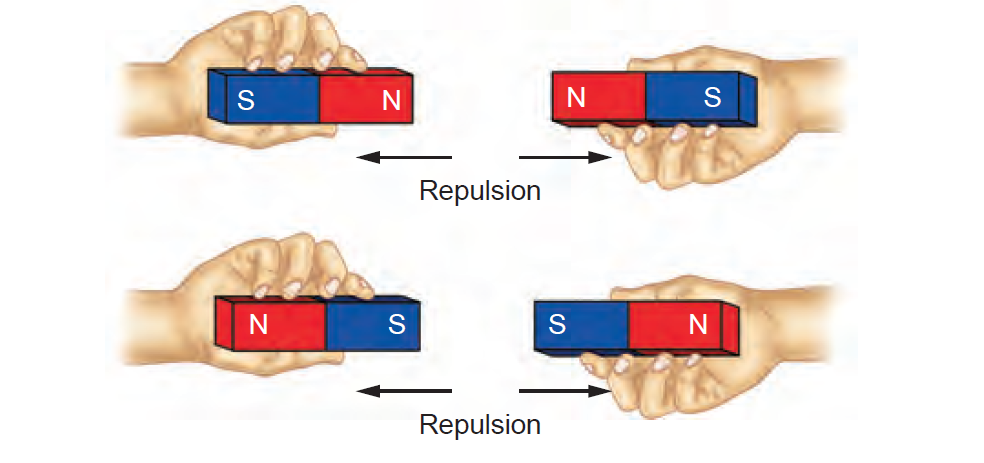
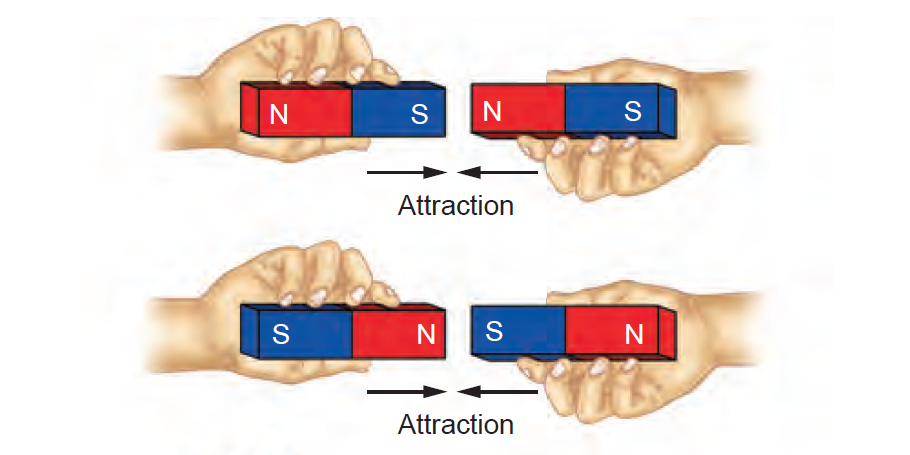
Compass
A compass is an instrument which is used to find directions. It is mostly used in ships and airplanes. A compass has a magnetised needle which is pivoted inside the box and can rotate freely. The compass also has a dial with directions marked on it. The needle indicates the north-south direction when it comes to rest. To identify North pole of the magnetic needle, it is usually painted in a different colour. The painted part of the needle indicates North pole.
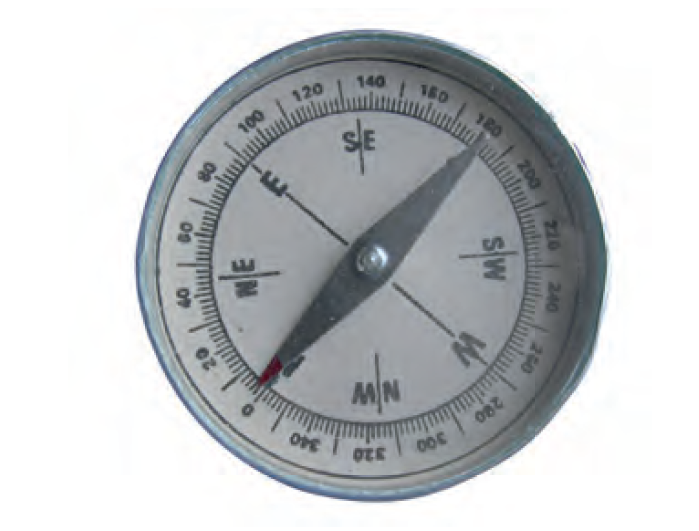
How to make your own magnets?
Magnets can be made with the help of a magnetic substance using four methods:
1. Magnetic induction method: Take a long nail. Put it on the arm of a stand. Spread some iron pins on the base of the stand. You will notice that the pins do not get attracted towards the nail. Now take a magnet. Bring one of the poles of a magnet close to the head of the nail. You will observe that some pins at the base of the stand will start clinging to the nail. Thus, a nail becomes a magnet through magnetic induction.
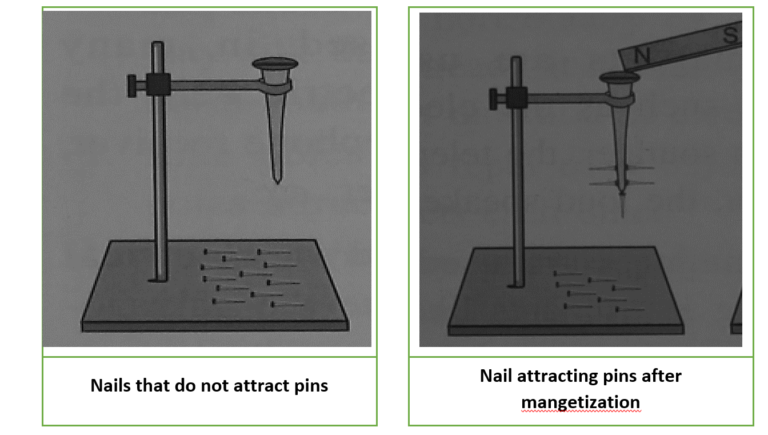
2. Single touch method: Take an iron bar. Place it on a table top. Take a bar magnet and place one of its poles near one edge of the bar of iron. Without lifting the bar magnet, move it along the length of the iron bar till you reach the other end. Now, lift the magnet and bring the pole (the same pole you started with) to the same point of the iron bar from which you began. Repeat this process for several times. You will find that after sometime, the iron bar will turn into a magnet.
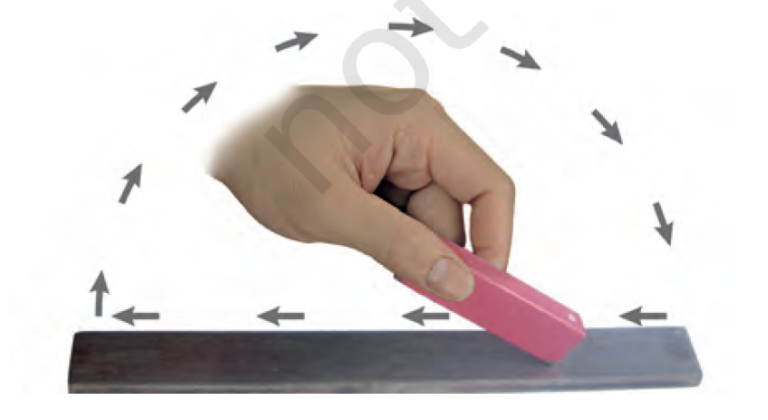
3. Double touch method: Take two magnets of the same size and strength. Place north pole of one magnet and south pole of the other magnet in the middle of the iron bar. Rub both the magnets against the iron rod several times taking one magnet to the one end of the iron bar. Each time, start from the middle of the iron bar and rub upto its ends.

4. Electrical method: If a bar of soft iron is placed inside a coil of insulated wire with several turns and current is then passed through the coil, the soft iron will become strongly magnetised. One end of it will become a north pole and the other end will become a south pole. When the current is turned off, the soft iron bar loses nearly all its magnetism.
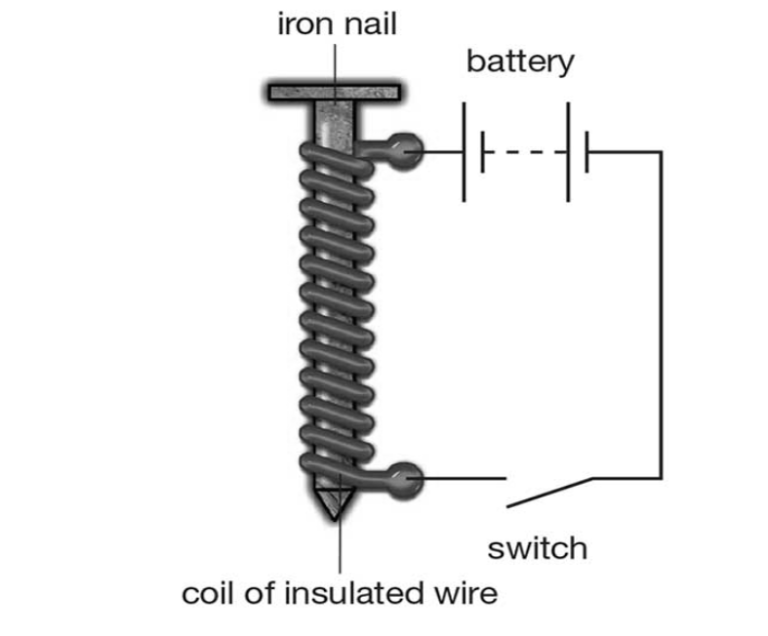
Methods to Demagnetize a material
A magnet can lose its magnetic properties in the following ways:
- By hammering the magnet repeatedly
- By rough handling
- By heating the magnet
- By passing AC current through a coil around the magnet.
- Dropping it repeatedly on a hard surface
- By self-demagnetisation
Maintenance of magnet:
Magnets which are not in use should be stored in magnetic keepers. Improper care could lead to demagnetization of the magnet. To keep them safe:
- A bar magnet should be kept in pairs with their unlike poles on the same side. They must be separated by a piece of wood while two pieces of soft iron should be placed across their ends.
- For a horseshoe magnet, one should keep a piece of iron across the poles.
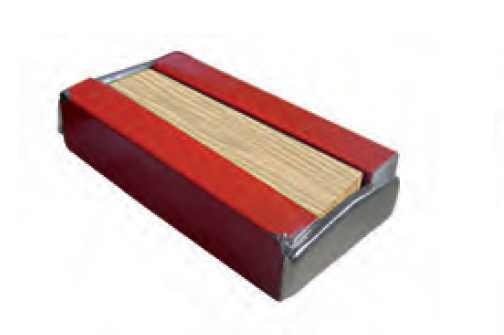
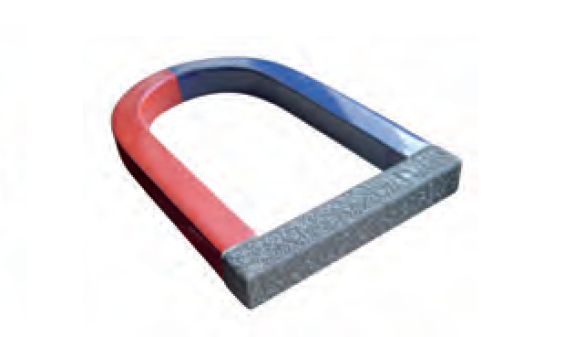
Solution of the exercise
Fill in the blanks
- Artificial magnets are made in different shapes such as __________, __________ and ____________.
- The Materials which are attracted towards a magnet are called________.
- Paper is not a ______ material.
- In olden days, sailors used to find direction by suspending a piece of ___________.
- A magnet always has __________ poles.
Solution:
- Bar magnet, Horseshoe magnet and Disc magnet
- magnetic materials
- magnetic
- magnet
- two
State whether the following statements are true or false:
- A cylindrical magnet has only one pole.
- Artificial magnets were discovered in Greece.
- Similar poles of a magnet repel each other.
- Maximum iron filings stick in the middle of a bar magnet when it is brought near them.
- Bar magnets always point towards North-South direction.
- A compass can be used to find East-West direction at any place.
- Rubber is a magnetic material.
Solution:
- False (Any magnet irrespective of their shape and size has always two poles.)
- False (Natural magnet was discovered in Greece.)
- True (Similar poles repel and opposite poles attract of magnets)
- False (The strength of magnetism is maximum at its poles and minimum at the centre. So, maximum iron filling will stick at the poles and minimum iron fillings will stick at the centre of a magnet.)
- True (A freely suspended bar magnet always points towards in North-South directions.)
- True (The needle of a compass always rests in North-South direction. After locating North and South direction, one can easily identify East-West direction.)
- False (Rubber is not a magnetic material.)
It was observed that a pencil sharpener gets attracted by both the poles of a magnet although its body is made of plastic. Name a material that might have been used to make some part of it.
Solution:
Iron is used to make some part of the sharpener due to which it got attracted towards the magnet.
Column I shows different positions in which one pole of a magnet is placed near that of the other. Column II indicates the resulting action between them for each situation. Fill in the blanks.
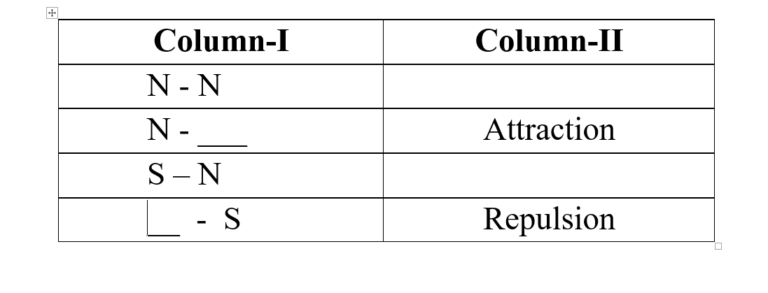

Write any two properties of a magnet.
Solution:
The two properties of a magnet are:
- A magnet attracts small pieces of iron fillings.
- Like poles repel and unlike poles attract.
Where are poles of a bar magnet located?
Solution:
The poles of a magnet are located at near its end point.
A bar magnet has no markings to indicate its poles. How would you find out near which end is its north pole located?
Solution:
Take a bar magnet and suspends it freely with the help of a thread. When suspends freely, it will align itself in North-South direction. Now take another bar magnet with marked poles on it. Now bring the north pole of this bar magnet (marked poles) close to one of the poles of the suspended bar magnet. If the suspended bar magnet gets repel then this end of the bar magnet will be certainly North pole. In this way, one can know the North pole of a magnet.
You are given an iron strip. How will you make it into a magnet?
Solution:
Take an iron bar. Place it on a table top. Take a bar magnet and place one of its poles near one edge of the bar of iron. Without lifting the bar magnet, move it along the length of the iron bar till you reach the other end. Now, lift the magnet and bring the pole (the same pole you started with) to the same point of the iron bar from which you began. Repeat this process for several times. You will find that after sometime, the iron bar will turn into a magnet.
How is a compass used to find directions?
Solution:
A compass has a magnetised needle which is pivoted inside the box and can rotate freely. The compass also has a dial with directions marked on it. The needle indicates the north-south direction when it comes to rest. To identify North pole of the magnetic needle, it is usually painted in a different colour. The painted part of the needle indicates North pole. After knowing the North direction, we can find all the other three directions of that place.
A magnet was brought from different directions towards a toy boat that has been floating in water in a tub. Affect observed in each case is stated in Column I. Possible reasons for the observed affects are mentioned in Column II. Match the statements given in Column I with those in Column II.
